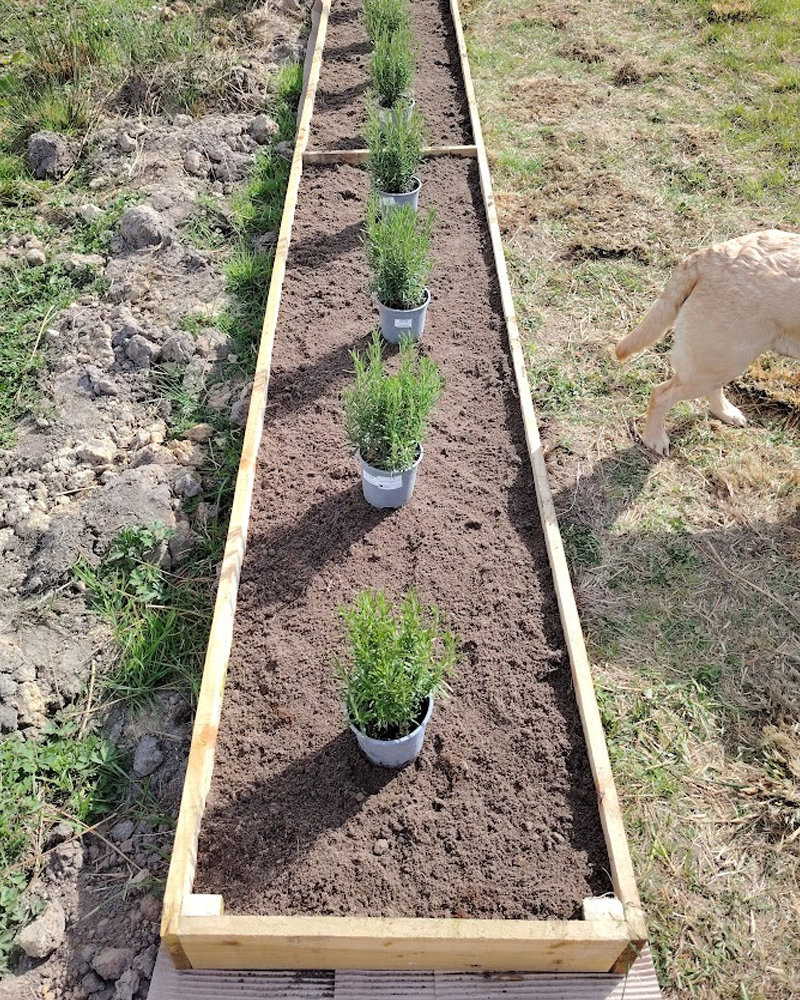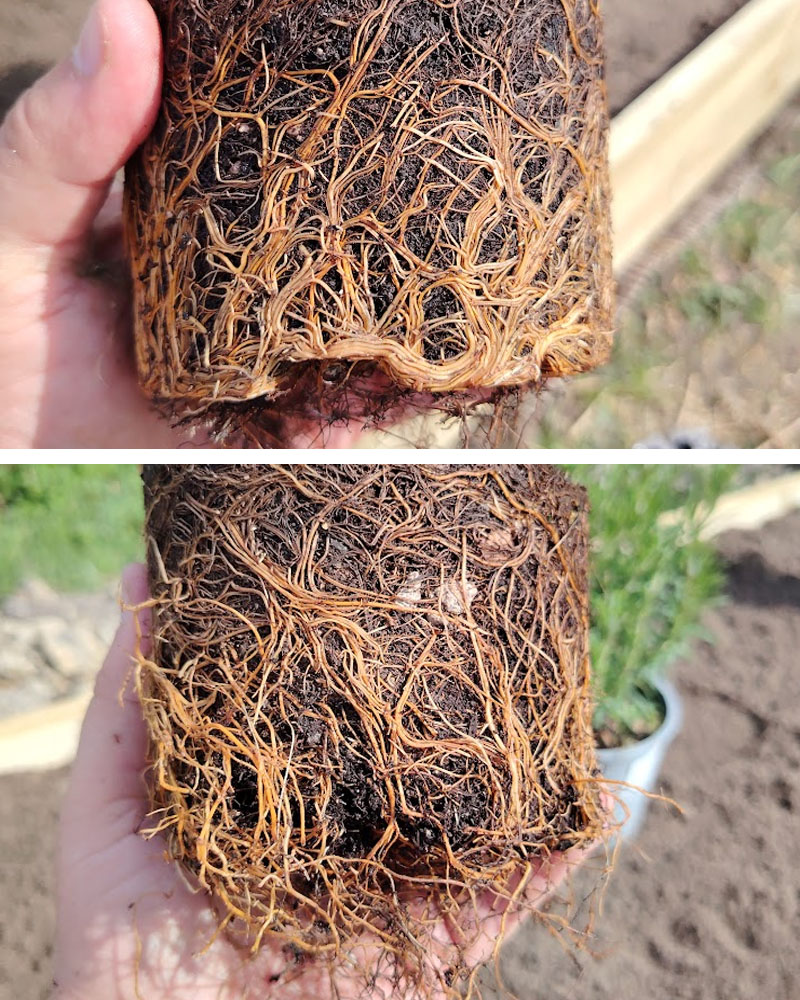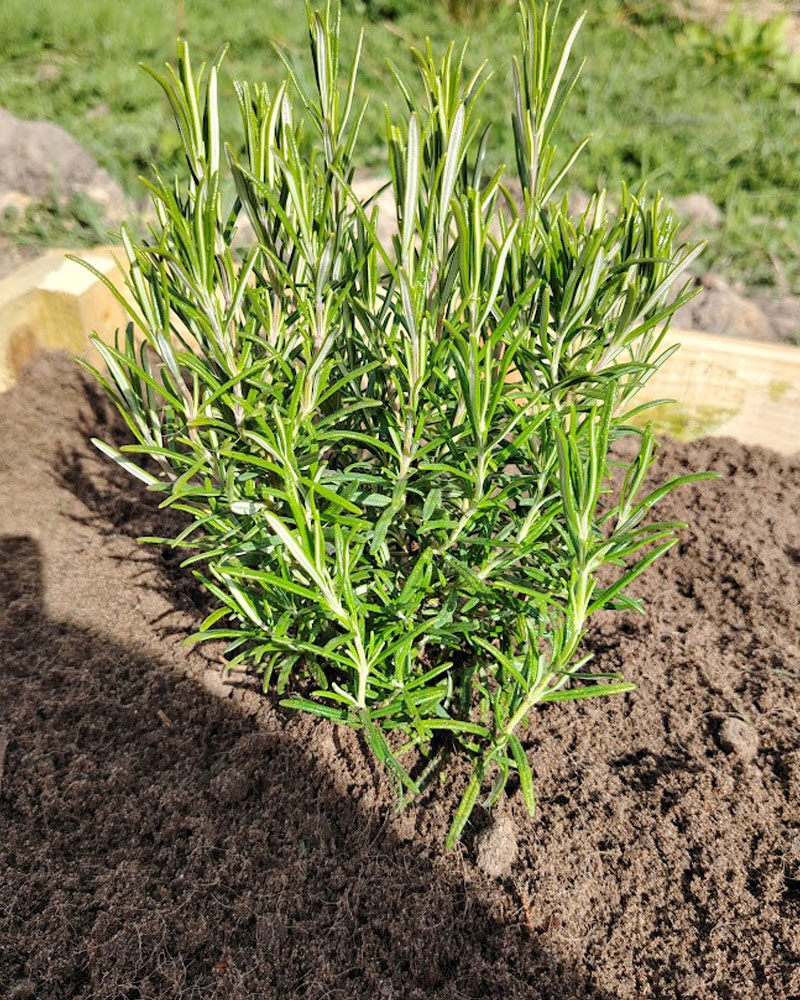Why Rosemary?
Rosemary is a great choice for a low hedge in UK gardens. It’s evergreen, so it keeps its shape and colour year-round, and it brings scent, flowers, and structure. Bees love it, especially early in the season when it’s one of the first to bloom.
It’s also a practical plant. You can pick sprigs year-round for cooking, and it’s hardy in most parts of the UK if planted in a sunny, well-drained spot. Unlike box, rosemary won’t suffer from blight or moth infestations. And while it’s not as formal, it clips neatly and holds a shape well with a bit of care.
For those wanting a productive garden that still looks smart, rosemary ticks a lot of boxes.
The Benefits of a Rosemary Hedge
Brush past it and you’ll get a hit of fresh, herbal fragrance. Great near paths or seating areas. The flowers draw bees and other beneficial insects, supporting garden biodiversity.
You’ve always got fresh rosemary to hand for cooking, especially useful in winter when not much else is growing. It’s rarely troubled by pests or diseases, making it a low-risk option for organic gardens.
Once established, rosemary needs little water, which is ideal for low-maintenance gardens. It gives a strong, evergreen outline to beds and borders, without the problems that come with box.
Best Varieties for Hedging
Not all rosemary is created equal. For hedging, you want upright varieties rather than trailing ones. ‘Miss Jessopp’s Upright’ is a popular choice – it grows straight and tall with minimal fuss. ‘Tuscan Blue’ is another good option, with rich blue flowers and strong stems.
Avoid creeping types like ‘Prostratus’ as they won’t give you the structure you need. Buy young plants in 9cm or 1L pots – they’ll establish quickly and be much more cost-effective than larger ones.
Where and When to Plant
Pick a sunny, sheltered spot with free-draining soil. Rosemary hates sitting in wet over winter, so avoid heavy clay or anywhere that gets waterlogged. If drainage is an issue, consider a raised bed or mound up the planting area. Thats exactly what I di and built a raised bed for my hedge as I'm on heavy clay soil here.
Spring or early autumn are ideal planting times. The soil is still warm, giving the roots a good head start. Avoid planting in winter or peak summer heat.
How I Planted My Rosemary Hedge
I started my making a shallow raised bed, roughly 6" high. This is to help improve the drainage as my natural soil is very heavy clay which rosemary will not like at all. By adding a raised bed you improve the drainage massively, but then I am also filling the raised bed with a very sandy soil mix to improve the drainage even further.

Start by spacing plants about 30–45cm apart. This gives them room to fill out without leaving gaps.

Then gently remove the plants from thier pots. If the roots have got a little dense and started to spiral then gently ease them apart with your fingers. If you dont do this then the roots man continue to spiral once planted.

Dig a hole slightly bigger than the pot, add a handful of grit if your soil’s heavy, and plant so the base of the stem is level with the soil. Firm in and water well.

In dry spells during the first year, water regularly. After that, they’re drought-tolerant and low maintenance.
Keeping It Neat
Trim lightly after flowering to keep the shape. Don’t cut into old wood, as rosemary can struggle to regrow from it. Aim for a gentle tidy-up each year, not a harsh haircut. With time, the hedge will thicken out and become a sturdy, scented border.
Rosemary doesn’t need much feeding – maybe a light top-dressing of compost in spring. Too much feed encourages soft growth, which is more prone to frost and disease.


Leave a Reply